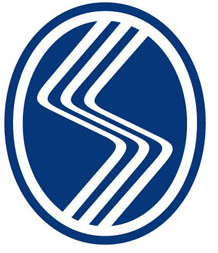Açık Akademik Arşiv Sistemi
Effects of preoperative biliary drainage methods and time to postoperative complications after biliary drainage in periampullary tumors
JavaScript is disabled for your browser. Some features of this site may not work without it.
| dc.contributor.authors | Subasi, Ozkan; Ercan, Metin; Aziret, Mehmet; Biricik, Aytac; Kahraman, Yavuz Selim; Altintoprak, Fatih; Celebi, Fehmi; Karaman, Kerem | |
| dc.date.accessioned | 2022-12-20T13:24:44Z | |
| dc.date.available | 2022-12-20T13:24:44Z | |
| dc.date.issued | 2022 | |
| dc.identifier.issn | 0003-469X | |
| dc.identifier.uri | https://hdl.handle.net/20.500.12619/98957 | |
| dc.description | Bu yayının lisans anlaşması koşulları tam metin açık erişimine izin vermemektedir. | |
| dc.description.abstract | OBJECTIVE: To compare postoperative morbidity and mortality results in patients with and without endoscopic and percutaneous transhepatic biliary drainage due to obstructive jaundice caused by a periampullary tumor and to examine the effect of intervals until surgery on postoperative morbidity and mortality in patients who underwent preoperative biliary drainage (BD). METHODS: Patients were divided into 3 groups according to their BD status. Groupl, no biliary drainage (NBD), Group2, Endoscopic biliary drainage (EBD), Group3, Percutaneous transhepatic biliary drainage (PBD). Patients who underwent biliary drainage before pancreaticoduodenectomy (PD) were divided into 3 intervals according to the time interval between drainage and surgery: Short interval; patients undergoing surgery in 21 days and <, Medium interval; between 22-42 days, Long interval; 43 days and >. Groups and intervals were compared in terms of postoperative morbidity and mortality. RESULTS: Of the 122 patients who underwent PD, 76 (62.3%) were male, and 46 (37.7%) were female. Within these patients, 47 (38.52%) had NPD, 42 (34.42%) had EBD, and 33 (27.05%) had PBD. The rate of postoperative Grade B and C fistula was higher in the groups that underwent preoperative drainage compared to the group without preoperative drainage (p = 0.007). CONCLUSION: It was determined that the postoperative complication rate was lower in patients who did not undergo BD compared to patients who underwent biliary drainage. Besides, the endoscopic drainage method was observed to be associated with fewer complications than the percutaneous transhepatic drainage method. | |
| dc.language | English | |
| dc.language.iso | eng | |
| dc.subject | Surgery | |
| dc.subject | Preoperative biliary drainage | |
| dc.subject | Pancreaticoduodenectomy | |
| dc.subject | Periampullary tumors | |
| dc.subject | Post procedure complication | |
| dc.subject | Timing | |
| dc.title | Effects of preoperative biliary drainage methods and time to postoperative complications after biliary drainage in periampullary tumors | |
| dc.identifier.volume | 93 | |
| dc.identifier.startpage | 403 | |
| dc.identifier.endpage | 409 | |
| dc.relation.journal | ANNALI ITALIANI DI CHIRURGIA | |
| dc.identifier.issue | 4 | |
| dc.identifier.eissn | 2239-253X | |
| dc.contributor.author | Subasi, Ozkan | |
| dc.contributor.author | Ercan, Metin | |
| dc.contributor.author | Aziret, Mehmet | |
| dc.contributor.author | Biricik, Aytac | |
| dc.contributor.author | Kahraman, Yavuz Selim | |
| dc.contributor.author | Altintoprak, Fatih | |
| dc.contributor.author | Celebi, Fehmi | |
| dc.contributor.author | Karaman, Kerem | |
| dc.relation.publicationcategory | Makale - Uluslararası Hakemli Dergi - Kurum Öğretim Elemanı |
Files in this item
| Files | Size | Format | View |
|---|---|---|---|
|
There are no files associated with this item. |
|||











